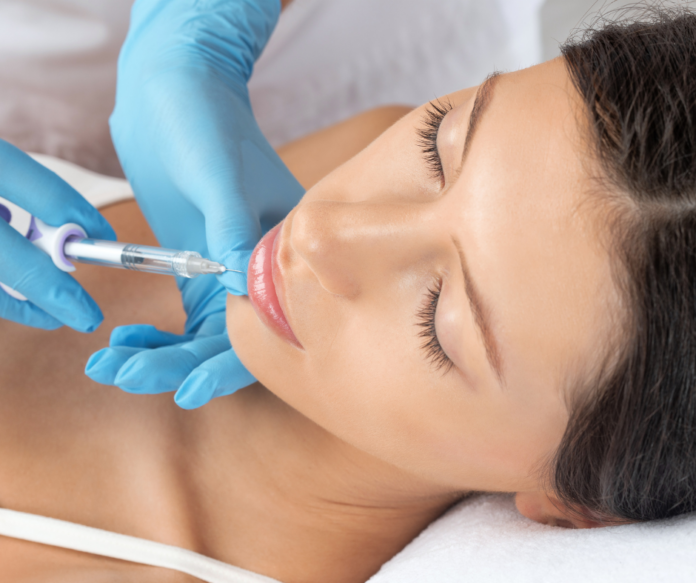
Medspa Services: A Comprehensive Guide to Dermal Fillers
When it comes to enhancing your appearance and achieving a more youthful look, medspa services offer a wide range of non-surgical treatments. One of the most popular options is dermal fillers, which can help to smooth out wrinkles, restore lost volume, and improve facial contours. In this comprehensive guide, we will address some of the most common informational queries regarding dermal fillers. Providing specific answers and solutions to help you make an informed decision about your treatment options.
What are Dermal Fillers?
Dermal fillers are injectable substances used to fill in wrinkles, lines, and hollow areas on the face. Providing a smoother and more youthful appearance. They can also be used to enhance facial features, such as adding volume to the lips or cheeks. Dermal fillers are a popular choice for those looking to improve their appearance without undergoing invasive surgical procedures.
Most Common Types of Dermal Fillers
There are several types of dermal fillers available, each with its own unique properties and benefits. Some of the most common types include:
1. Hyaluronic Acid (HA) Fillers
Hyaluronic acid is a naturally occurring substance in the body that helps to keep the skin hydrated and plump. HA fillers, such as Juvederm, Restylane, and Belotero, are popular choices for their ability to provide natural-looking results and minimal side effects. These fillers are typically used to treat moderate to severe facial wrinkles and folds, such as nasolabial folds and marionette lines. They can also be used to add volume to the lips and cheeks.
2. Calcium Hydroxylapatite (CaHA) Fillers
Calcium hydroxylapatite is a mineral-like compound found in bones and teeth. CaHA fillers, such as Radiesse, are thicker than HA fillers and provide longer-lasting results. They are often used to treat deeper wrinkles and folds, as well as to enhance facial contours and add volume to the cheeks. CaHA fillers also stimulate collagen production, which can help to improve skin quality over time.
3. Poly-L-lactic Acid (PLLA) Fillers
Poly-L-lactic acid is a biodegradable synthetic substance that has been used in medical applications for many years. PLLA fillers, such as Sculptra Aesthetic, work by stimulating collagen production, which helps to gradually restore facial volume and improve the appearance of wrinkles and folds. These fillers are often used to treat deep facial wrinkles, hollow cheeks, and other signs of facial volume loss.
4. Polymethylmethacrylate (PMMA) Fillers
Polymethylmethacrylate is a synthetic, biocompatible substance that has been used in medical applications for decades. PMMA fillers, such as Bellafill, consist of tiny microspheres suspended in a collagen gel. These fillers provide long-lasting results and are often used to treat deep wrinkles, acne scars, and other skin imperfections. PMMA fillers can also be used to enhance facial contours and add volume to the cheeks and lips.
How Long Do Dermal Fillers Last?
The longevity of dermal fillers depends on the type of filler used, the area treated, and individual factors such as metabolism and lifestyle. In general, HA fillers tend to last between 6 to 18 months, while CaHA fillers can last up to 2 years. PLLA fillers provide gradual results that can last up to 2 years or more, and PMMA fillers are considered semi-permanent, with results lasting up to 5 years or longer.
Are Dermal Fillers Safe?
When administered by a qualified and experienced professional, dermal fillers are generally considered safe. However, as with any medical procedure, there are potential risks and side effects. Some common side effects include redness, swelling, bruising, and tenderness at the injection site. More serious complications, such as infection, allergic reactions, or filler migration, are rare but can occur. It is essential to discuss your medical history and any concerns with your provider before undergoing treatment with dermal fillers.
How Much Do Dermal Fillers Cost?
The cost of dermal fillers varies depending on the type of filler used, the amount needed, and the provider’s expertise. In general, you can expect to pay between $500 to $2,000 per treatment session. It is important to remember that dermal fillers are not a one-time expense, as maintenance treatments will be required to maintain your desired results.
Summary: What are the most common types of dermal fillers?
Dermal fillers are a popular and effective option for those looking to improve their appearance without undergoing invasive surgical procedures. With a variety of filler types available, including hyaluronic acid, calcium hydroxylapatite, poly-L-lactic acid, and polymethylmethacrylate, there is a solution to address a wide range of cosmetic concerns. When considering dermal fillers, it is essential to consult with a qualified and experienced provider to discuss your goals, expectations, and any potential risks or side effects. By making an informed decision, you can achieve a more youthful and refreshed appearance with the help of medspa services and dermal fillers.



